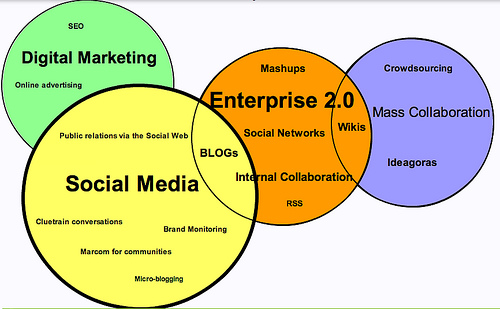To be or not to be: Web 2.0 at work (a small bunch of facts)

Judge for yourself:
using web 2.0 means participating. Less viewing and reading - more action and ratings.
')
web 2.0 everyone (or almost everyone) knows how to use
areas in which web 2.0 use is effective are related to:
- spread of knowledge
- problem solving
- planning innovations, including evaluation of ideas
- interaction (including with clients) / teamwork
corporate barriers to web 2.0 implementation
- security (still!)
- confidentiality
- efficiency (it is not yet clear how to evaluate it for a blog, for example)
- corporate culture (well, as usual)
- lawyers (how without them?)
- lack of quality support and implementation that corporate products are associated with (!)
- lack of a generally accepted financial model of return on investment
Most of the big projects started as small pilots - for example, a department wiki.
the main reason for the brakes in the implementation is the lack of understanding of the big authorities how all this can increase the efficiency of work
However:
in England, only 32% of firms invested at least one penny in Web 2.0 technology!
McKinsey's research shows that companies invest in automation much more often (80% of companies use web services, 47% of collaborative systems) than web 2.0 technologies (32% of blogs, 35% podcasts and 33% of wikis)
Next we will talk about this study.
56% of enterprises that have implemented Web 2.0 speaks about improving internal interaction, 53% - about team building, and 50% - about greater organization openness.
How to use web 2.0:
70% - customer interaction
51% - interaction with suppliers and partners
75% - management of internal employee interaction
20% - using blogs to improve customer support
Just over 50% - knowledge management inside the organization
Just under 50% for new product development.
More than half of the companies (which have implemented web 2.0) are very happy with the investment and only 13% are disappointed.
Here, only the facts and, perhaps, they will be useful. If not - no)
More web-dance projects: good and different!
Source: https://habr.com/ru/post/72298/
All Articles